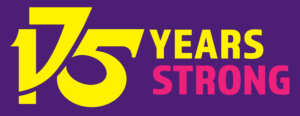The key strength of the EIS is its network of reps, whether at school, college or university. The local rep is the link between members and the Institute. Despite the national campaigns and political agreements, it is often left to the school rep to sort out matters for members.
It wasn’t always thus, however. Back in the late 1960s, when Scottish teachers were faced with unmanageable working conditions, it wasn’t immediately obvious where they ought to turn. Schools in those days were shockingly understaffed, and it was left to those few teachers on the staff to cope with the resulting chaos. It was not unusual, therefore, for a Glasgow primary teacher to have a class of more than 50 pupils; others taught 40 children in the morning and another 40 in the afternoon. Alana Ross, who began teaching in the East End of Glasgow in 1969, considered herself lucky to have had only 44 pupils in her class.
“Pupils were being taught in gym halls, on the stage, in every available space,” she says. “Every bit of the school was used for teaching. There were classes everywhere.
Obviously, at that stage, it was not a learning environment. It was absurd.”
The absurdity was such that the EIS – still in its infancy as a campaigning trade union – decided that enough was enough. It began a campaign to limit the number of pupils in any given class.
The official line was that there shouldn’t be more than 33 children in a class, with flexibility to go up to 39 children in certain circumstances. If there were more than 39 children in any class, then the school needed to send some home. This was obviously not an ideal situation – Ross refers to “an absolute shambles” – but it was a first step in the right direction.
This kind of activism – taking control of their own working conditions – was new to many teachers at this stage. A considerable number had come into the profession following a large-scale campaign to solve the class-size problem by recruiting more teachers.
Many of them were either young people, straight from training college, or mature women, returning to the workforce now that their own children were old enough to go to school.
Gradually, the new cohort of young teachers learnt how to challenge their managers more effectively – a turning point for the EIS as a union.
Today, the EIS invests heavily in training and supporting its reps, not only as the local point of reference but also across broader networks such as equality, health and safety, and professional learning. Without the dedicated – and altruistic – service of these activists, teachers across Scotland would be in a much poorer place.
General Secretary Larry Flanagan commented, “Without a shadow of doubt, the school or branch rep is the key point of contact for most members. It is the rep who is on the ground, dealing with the every day issues which bedevil members, providing advice or relevant contacts, keeping up the membership figures, organising meetings and comms.
Their altruistic service to their colleagues is the bedrock of the Union and as well as providing as much training and support as we can, to make them as effective as possible, the Institute should herald and applaud their sterling efforts at every opportunity.”
ACKNOWLEDGEMENTS:
Research, interviews and substantive writing:
Adi Bloom
Design and lay-out:
Stuart Cunningham and Paul Benzie
Additional writing and research:
EIS Comms Team and assorted staff members
Printed by:
Ivanhoe Caledonian, Seafield Edinburgh
Photography:
Graham Edwards, Mark Jackson, Elaine Livingston, Toby Long, Ian Marshall, Alan McCredie, Alan Richardson, Graham Riddell, Lenny Smith, Johnstone Syer, Alan Wylie


Thanks to the many former activists and officers who gave of their time to be interviewed and taken a stroll down memory lane. And of course a very special thanks to the EIS members who created this history through their activism and commitment to the cause of Scottish Education.
© 2022 The Educational Institute of Scotland